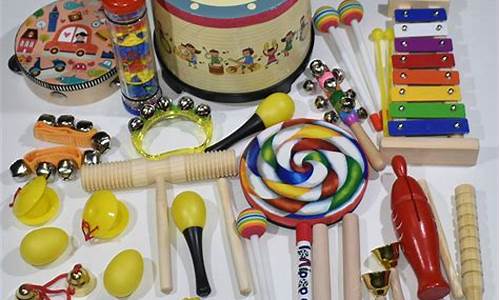stillalive_Stillalive歌词DOggie翻译中文
1.That he is still alive is a wonder. 直接用 He is still alive is a wonder
2.lively alive living live的区别
3.live,lively,alive,living,life这几个什么区别
4.living和alive的区别
5.能不能翻译下Alive(Meat Loaf)的歌词。我总是翻译不出味道来。 感谢。
6.急!请区别 alive ; live ; living ; lively ;life ;怎么用?稍微详细一点就好。

Everytime
I
look
Into
Your
Eyes
每次我看着你的眼睛
I
still
hear
your
voice
around
我还听到你的声音在陪伴我
Like
an
echo
像一个回声
Everything’s
in
a
mess
每件事都一团糟
Why
this
feeling
turns
so
cold
为什么会有这样的感觉这么冷?
Freezing
in
the
darkness
冻结在黑暗中
So
alone
所以独自
Every
time
I
look
into
your
eyes
每次我看着你的眼睛
I
can
tell
that
our
love
is
still
alive
我可以告诉你,我们的爱情还活着
It’s
killing
me
oh
baby
这是我的宝贝
Every
time
you
look
into
my
eyes
每次当你看着我的眼睛
I
rather
hear
the
truth
than
live
in
all
your
lies
我宁愿听真理比住在你所有的谎言
I’m
so
lost
I’m
so
hurt
for
you
我迷路了,我真为你所造成的伤害
How
could
I
survive
我怎能存活呢
Would
it
be
the
very
last
kiss
它会是最后一吻
All
those
memories
所有的回忆
All
those
sorrows
Fade
away
所有这些痛苦消失
Every
time
I
look
into
your
eyes
每次我看着你的眼睛
I
can
tell
that
our
love
is
still
alive
我可以告诉你,我们的爱情还活着
It’s
killing
me
oh
baby
这是我的宝贝
Every
time
you
look
into
my
eyes
每次当你看着我的眼睛
I
rather
hear
the
truth
than
live
in
all
your
lies
我宁愿听真理比住在你所有的谎言
I’m
so
lost
I’m
so
hurt
for
you
我迷路了,我真为你所造成的伤害
How
could
I
survive
我怎能存活呢
翻译得不好、大概就是这个意思
...
That he is still alive is a wonder. 直接用 He is still alive is a wonder
这里how it was that he was still alive作explain的宾语(从句),该从句是一个主系表结构的句子,其中关系副词how作引导词,it作主语, was是系动词,that引导表语从句he was still alive.
作者之所以使用了how it was…,是为了强调汉斯解释自己“怎么就还活着”。如果用why/how he was still alive,语法上是不存在问题的,但就没有强调“怎么就”的味道了。
lively alive living live的区别
口语或许可以,你这么跟外国人说,八成人也能听懂(人的大脑其实是很多维的)。但是做学问、考试、纠语法的话,就不行了。
这句话翻译过来是”他还活着这件事是一个奇迹“。
1.从语法结构上说:
简化来说,英语和汉语语法一样的地方就是肯定句都有主谓宾结构。也就是“什么/谁-是-什么”或者“什么/谁-(被)做-什么”的结构。这句话是个“什么-是-什么”的结构。第2个”is“是谓语,“a wonder“是宾语,这个主语有点复杂。需要分清的是,主语绝对不是”he"(他),而是他还活着这件事。是奇迹的不是“他”这个人,而是”他还活着”这件事,所以主语是事情,不能以“He”(人)打头,加一个“That”就使得“he is still alive"与后面分离成为主语(”That“是代词,代指”这件事“)。而你去掉That以后,主语变成”He“,而后面有两个”is“,相当于有两个谓语,使其成为了一个病句,变得难懂。(这句子比较简单,如果是很长的复杂句子别人恐怕就很难理解了,简单加一个词就能避免沟通误解,外国人发明的这个看似多余的That其实很聪明啊,不要省哦~)
2.从用法上说:
这句话的意思是”他还活着这件事是一个奇迹“。
各个单词什么意思你应该都知道,那个”That”就相当于“这件事”,是个代词。你平常口语说“他还活着是一个奇迹”或许可以,但用在正式文书中严格来说就是有语病的,其实你有点语感的话读一读也会有点别扭,你至少要说“他还活着,这真是个奇迹。”这样子才感觉比较顺畅吧。所以无论是“这件事”还是“这”,在用语流畅上也都是必不可少的。
希望对你有所帮助!
live,lively,alive,living,life这几个什么区别
alive、live、living、lively的区别:含义不同、用法不同、侧重点不同。
一、含义不同
1、alive
adj. 活着的;有活力的;注意到的;热闹的。
2、live
v. 活着;居住;过着。
3、living
n. 生活;生计。
4、lively
adj. 活泼的; 活跃的; 栩栩如生的; 真实的。
二、用法不同
1、alive
alive的基本意思是“活着”,指人〔动物〕还没有死,也可指某人〔动物〕“有活力,活泼”或某事〔物〕“存在着,继续不断”。
Are your grandparents still alive?
你的祖父母还在世吗?
2、live
live用作形容词的基本意思是“活的,有生命的,精力充沛的”,主要用于动物,强调生命的健康及生命力的旺盛、生动,偶尔也可用于人,在句中只用作定语。
The cat is playing with a live mouse.
猫在戏弄那只活老鼠。
3、living
living作形容词的基本意思是“活着的”,指长久存在,活力经久不衰,可用于人也可用于物,还可用于比喻。living在句中作定语时,既可前置也可后置。引申可作“现存的;在使用中的”“逼真的,生动的”解。
The wilderness is a living museum of natural history.
这片荒野是一座活生生的自然历史博物馆。
4、lively
Lively“活泼的”、“活跃的”、“充满生气的”,可作定语、表语或宾补,即可指人,也可指物。
She's a lively child and popular with everyone.
她是个活泼的孩子,大家都喜欢她。
三、侧重点不同
1、alive
作形容词有“活着的,活的”之意,alive其反义词为dead,指生命从奄奄一息到精力旺盛的各种状态。
2、live
作形容词有“活着的,活的”之意,live通常作定语,指活生生的,生气勃勃的,还可表示现场直播的。
3、living
作形容词有“活着的,活的”之意,living其反义词为dead,指包括人和动植物的生命没有消失、仍然存在的状态。
4、lively
lively意为"生动的;活泼的;有生气的”,还可引申为“强烈的;敏锐的;紧张的;鲜艳的”, 可作定语(前置)、表语、主补、宾补。
living和alive的区别
1)alive 意为“活着的”,强调生与死的“界限”.主要用作表语和宾补 (有时可用作后置定语,但不用作前置定语),可用于人或动物.例如:
He must be still alive.他一定还活着.
Keep him alive,please.请让他活下去吧.
He is the only man alive in the accident.他是事故中惟一活着的人.
She wondered whether the fish was alive or dead.她不知道这鱼是死是活.
2)living 意为“活着的、有生命的”,强调“尚在人间”或“健在”,主要用于作前置定语及冠词the 之后表示一类人,也可用作表语,可修饰人或物.例如:
all living things所有生物 the living 在世者,活着的人们
The living will go on with the work of the dead.活着的人将继续死者的工作.
All the living presidents attended Nixon's funeral.
所有活着的总统参加了尼克松的葬礼.
Her grandfather is still living at the age of 95.
她爷爷已经95岁了,仍然健在.
3) live [laiv]
(1)(动、植物)“活的”,“活生生的,通常只用作前置定语,可用于动物或植物,但一般不用于人.例如:a live fish一条活鱼 a live tiger 一只活老虎
Only a few live trees were left after the fire.
火灾之后只剩下几棵树还活着.
(2)实况的,现场直播的;如:a live report现场报道a live show/broadcast/TV program现场转播的表演/实况广播/现场直播的电视节目
4)lively 意为“活泼的”,“有生气的”,“生动的”,可用作表语、定语,指人或物.例如:
a lively child 活泼的孩子
a lively discussion 热烈的讨论a lively description 生动的描述
He told a lively story about his life in India.
他讲述了一个有关他在印度生活的一个生动故事.
Young children are usually lively.
年轻人通常很活泼
能不能翻译下Alive(Meat Loaf)的歌词。我总是翻译不出味道来。 感谢。
alive,living的用法区别
这两个词都表示“活着的”、“有生命的”(hing life)意思,词义相同,但用法有所不同。
一、Alive是表语形容词,放在to be,及其它联系动词之后作表语用,不能放在它所说明的名词之前。活跃的,“活着的”、“有生命的”; 仍然存在的;仍然进行着的;继续活动的, 继续有效的; 运行中的;例如
The old man is still alive. 老人还活着。
The fish we caught is still alive.我们捉的鱼还活着。
In most cases, both parents were still alive and still married to each other.大多数情况下,他们的父母都还活着,而且仍然保持着婚姻关系。
Although old, she is still very much alive.她虽已年迈,但仍很活跃。
The argument was kept alive by the politicians.政治家们还在继续争论那件事。
The fish we caught is still alive.我们所捕的鱼还活着。
He is alive with enthusiasm.他热情奋发。
The news of victory kept us alive in excitement.胜利的消息使我们兴奋。
The lake was alive with fish.这湖中有很多鱼。
二、Living既可用作表语形容词,又可用作定语形容词,故可放在它所修饰的名词之前。
Shelly was still living when Keats died.济慈死时, 雪莱还在世。
就使用场合而言,alive大都用于人,有时用作比喻或强调时也用于物。例如:
Given the chance to sing on stage,he is very much alive. 有机会在台上唱歌,他显得很活跃。
The bazaar was all alive by the time we arrived. 我们到达时,墟市非常热闹。
Living则人物共用。
就词性而言,alive只能用作形容词,不能作名词;living既可作形容词,又可作名词。例:
Many people were burnt alive in the conflagration that hened in a multi-storeyed building.在一幢多层大厦内发生的大火中,很多人被活活烧死。
The spy was caught alive though he died from wounds the next day.特务被活捉, 不过第二天便因重伤而死。
Our living standards are rising steadily.我们的生活水平在不断提高。
Those who enjoy a good living seldom understand the suffering of the poor.过着美好生活的人一般都不明白穷人所受之苦。
在某些场合下,living和alive表示的涵义并不相同,尽管它们都用作表语。例如:
At last we found him in a trap in the forest,still living but not alive.
通过对比,可以看出,living之意是“活的”;alive 之意是“有气息的”。这里的not alive表示人虽然还活着,但已“气息奄奄”、“没有生气”了。
Alive有时尚可表示“alert”“感觉到的”、“敏感的”涵义。如:
He is alive to the imminent danger. 他感觉到那迫在眉睫的危险。
急!请区别 alive ; live ; living ; lively ;life ;怎么用?稍微详细一点就好。
I'm still alive
Must he been a miracle
我还活着,这绝对是个奇迹。
It's been a hell of ride
Destination still unknown
披荆斩棘,却仍不知终点所在,It's a fact of life:这就是生活If you make one wrong move with the gun to your head一着不慎,便命悬一线,You better walk the line or you'll be left for dead
小心应对,不然命丧黄泉,I'm a runaway train on a broken track我是一辆脱轨狂奔的列车。I'm the ticker on a bomb that you can't turn back this time
我是无法终止的定时器,That's right,就这样。I got away with it all and I'm still alive
逍遥法外的我仍然活着,Let the end of the world come tumbling down
让世界终结的狂澜席卷而来吧,I'll be the last man standing on the ground
我将屹立到最后,As long as hot blood runs through my veins只要我的血液还在奔流,I'm still alive我就仍然活着
1)alive 意为“活着的”, 强调生与死的“界限”。 主要用作表语和宾补 (有时可用作后置定语,但不用作前置定语),可用于人或动物。例如:
He must be still alive. 他一定还活着。
Keep him alive, please.请让他活下去吧。
He is the only man alive in the accident.他是事故中惟一活着的人。
She wondered whether the fish was alive or dead. 她不知道这鱼是死是活。
2)living 意为“活着的、有生命的”,强调“尚在人间”或“健在”,主要用于作前置定语及冠词the 之后表示一类人,也可用作表语,可修饰人或物。例如:
all living things所有生物 the living 在世者,活着的人们
The living will go on with the work of the dead.活着的人将继续死者的工作。
All the living presidents attended Nixon's funeral.
所有活着的总统参加了尼克松的葬礼。
Her grandfather is still living at the age of 95.
她爷爷已经95岁了,仍然健在。
3) live [laiv]
(1)(动、植物)“活的”,“活生生的,通常只用作前置定语,可用于动物或植物,但一般不用于人。例如:a live fish一条活鱼 a live tiger 一只活老虎
Only a few live trees were left after the fire.
火灾之后只剩下几棵树还活着。
(2)实况的,现场直播的;如:a live report现场报道a live show/broadcast/TV program现场转播的表演/实况广播/现场直播的电视节目
4)lively 意为“活泼的”,“有生气的”, “生动的”,可用作表语、定语,指人或物。例如:
a lively child 活泼的孩子
a lively discussion 热烈的讨论a lively description 生动的描述
He told a lively story about his life in India.
他讲述了一个有关他在印度生活的一个生动故事。
Young children are usually lively.
年轻人通常很活泼
声明:本站所有文章资源内容,如无特殊说明或标注,均为采集网络资源。如若本站内容侵犯了原著者的合法权益,可联系本站删除。












